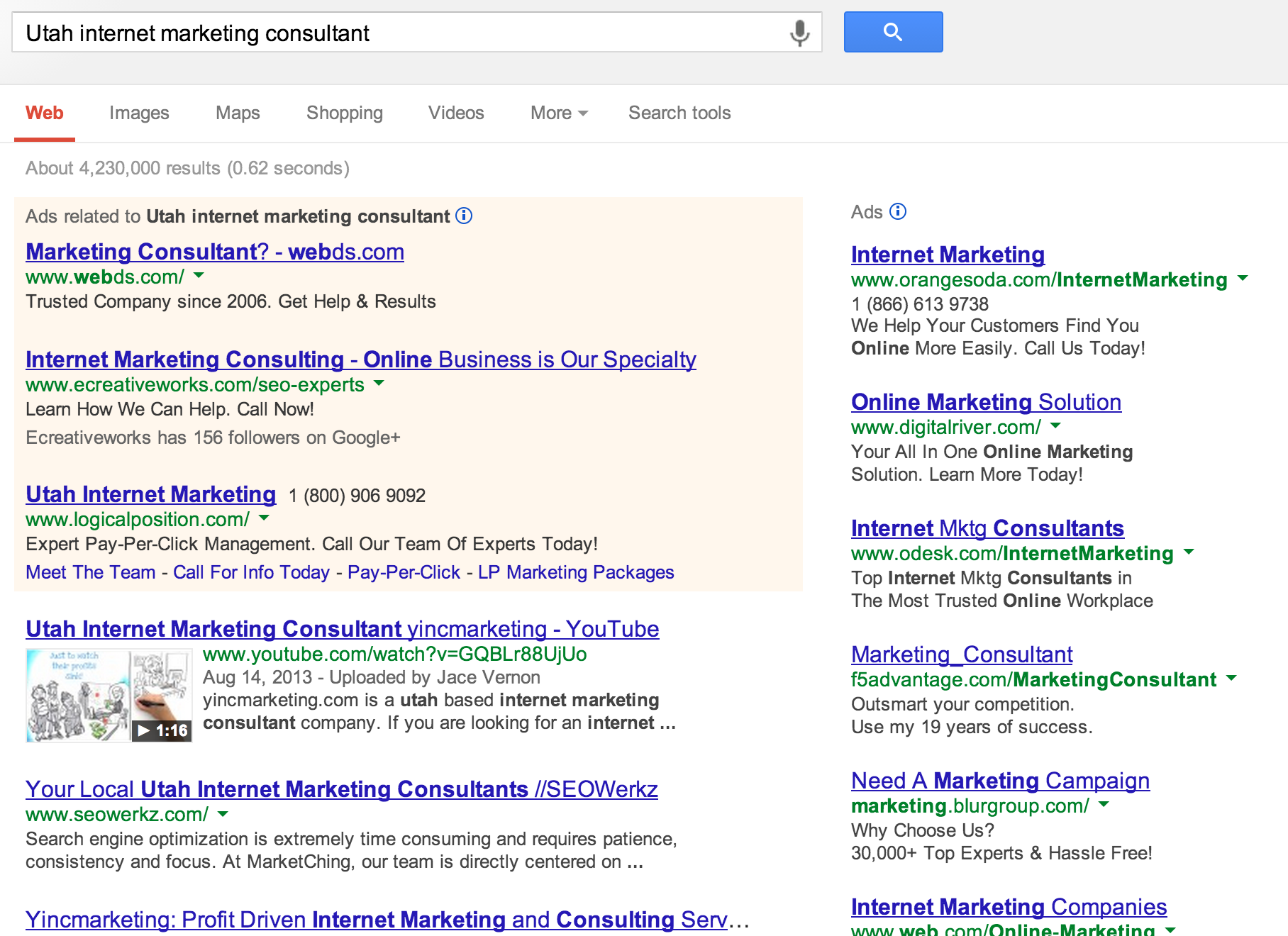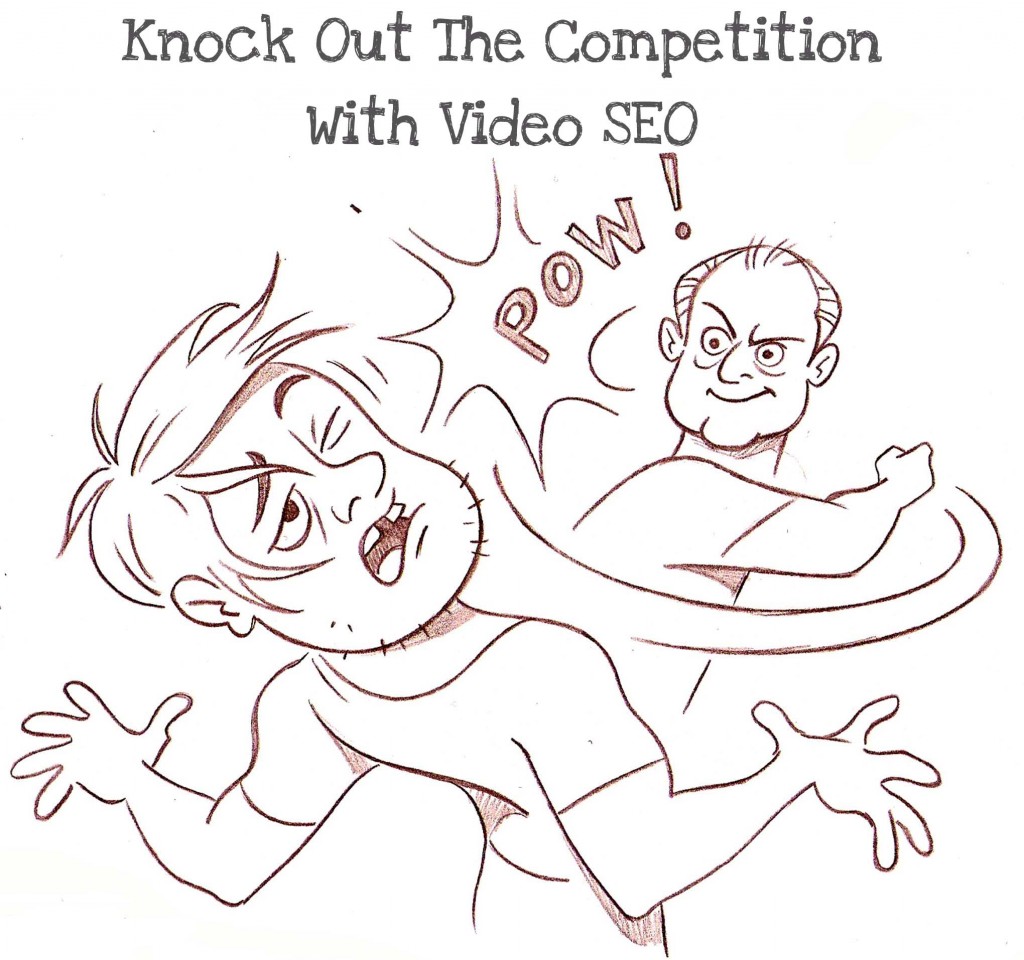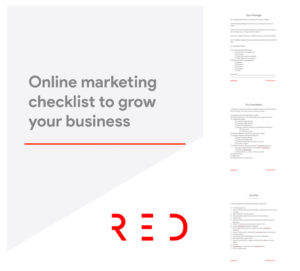
SEO Video Marketing: 3 Tips to Maximize Exposure
SEO Video Marketing: 3 tips to maximize exposure
Exposure is everything. It doesn’t matter how great your product or service is, how wonderful your people are, if no one can find you online. When I speak with clients and potential customers they all seem to have the same problem. How to get eyes on product or service?
Videos are a great way to gain additional exposure for your website or company. Take Yinc for example. Within 1 month I hit the #1 spot on Google for 2 specific key words. It works and you can take some simple steps to do the same thing. It is really important for you to get a video and follow this simple article. Here is how we do it! 
Tip 1: Select Competitive, Untapped Keywords
Don’t even bother targeting the top keywords for your business, until you have some traction. Instead, focus on untapped keywords—keywords others have neglected or overlooked. I could have gone after a basic keyword like “Internet Consulting,” but that would be almost impossible at first, so I focused on “Utah Internet Marketing Consultant.” Keywords are important.
Identifying them is relatively easy, you can use a keyword suggestion and research tool to see basic performance results and projections. If you are really lazy you can just go to Google and see what they auto suggest.
Now, here’s where people get confused. You aren’t necessarily looking for the keywords with the most searches by users on a daily basis. Number of searches is important, but it is counterweighted by the competition surrounding it.
For example, say you have a keyword that gets 1,000 searches daily. That sounds awesome, but you probably won’t land on the first page of Google if you optimize your videos for that keyword.
Why?
Competition.
I’d rather have my video on page one of Google for a keyword that gets 7 daily hits than on page 2 for a keyword that gets 100 daily hits! That’s because approximately 94% of users click on a first page search result.
I suppose, if you could land on the second page of Google for a keyword that receives several hundred daily searches, it might be worth your while. However, there’s no guarantee you’ll even land on the second page.
Now, I would rather focus my efforts on hitting the first page every time.
 Sizing Up The Competition
Sizing Up The Competition
There are two basic considerations that need to be made when it comes to sizing up your keyword competition:
1. The Number of Your Competitors
2. The Strength of Your Competitors
Finding the number of competitors for any given keyword is super simple; just Google the keywords. At the top of the page it will tell you how many results were returned.
For example, I searched for “Search Engine Optimization.” Google returned the following: About 70,600,000 results (0.30 seconds).
So, you would have about 70,600,000 competitors for these keywords on Google.
In general, you can probably land on the first page for keywords that return results in the single digit millions with relative ease. Anything under 1,000,000 is usually very easy to attain a first page ranking.
Ah, but you also have to consider the strength of your competition. I mean, would you rather fight one bull or ten puppies? (Hint: take the puppies.)
Google makes this very easy, just check the PageRank of the first page search results for any given keyword, and you’ll get a basic idea of the strength of your competition.
So, now you know. You’re either dealing with bulls or puppies.
Go forth and conquer my friends!
Tip 2: Include a Closed-Captioning Script
Google in particular really seems to like reading the closed-captioning scripts of videos. Depending upon how you produce your videos (whether or not you write a script), it may be easy for you to implement this tip and immediately increase your exposure.
The more words you give the search engines to work with the better they can understand what your content is about, and deliver that content to human users.
So, make sure your closed-captioning script is really a closed-captioning script.
Don’t just spin some articles or spam keywords in your script. This doesn’t help you, because it falsifies the actual substance of your content, which tends to frustrate users.
If I’m looking for energy drinks I don’t want electric service.
Keep your closed-captioning scripts organic and real—that’s going to give you maximum exposure in the long-run.
To add a closed-captioning script to a video on YouTube:
- 1. Log in and click the drop down arrow next to your account picture.
- 2. Select, “Video Manager.”
- 3. Click the down arrow attached to “Edit” by one of your videos.
- 4. Select “Captions.”
- 5. Now you can “Add Captions” to your video!
Tip 3: Target Humans, Not Search Engines
Speaking of the long run, let’s talk about longevity for a moment.
You want your videos to stay at the top of the SERPs for a long time, right? Then make sure you target humans and not Google (or Yahoo! or Bing…)!
Search engines are constantly changing their formulas and algorithms. One of the reasons they do this is to optimize their results for actual human users.
You see, search engines want to deliver quality, targeted results to their users very quickly. If the user can’t find what they’re looking for, they will try another search engine. So, search engines want to satisfy their users and that is why they change their formulas so frequently.
You can find and exploit certain search engine features, but why bother? It isn’t going to last. Those Google engineers work fast, and they will change the algorithm on you. I promise.
So, instead of focusing on tricks and exploits, focus on crafting organic videos that deliver what they promise.
How mad would you be if you bought a box of Cheerios at the store and found shredded wheat inside? Wouldn’t you be indignant as a consumer?
Yet, I see so many people doing this online. For example:
- Don’t call your video a “how to,” unless you teach people how to do something.
- Don’t include the word “proof” in your video. unless you have some.
- Don’t make your video thumbnail something tantalizing, yet unrelated.
Always package your videos with honest labeling. It will pay off in the long run.
So there you have it, now get out there and start marketing your videos use our 3 Tips to Maximize Exposure

